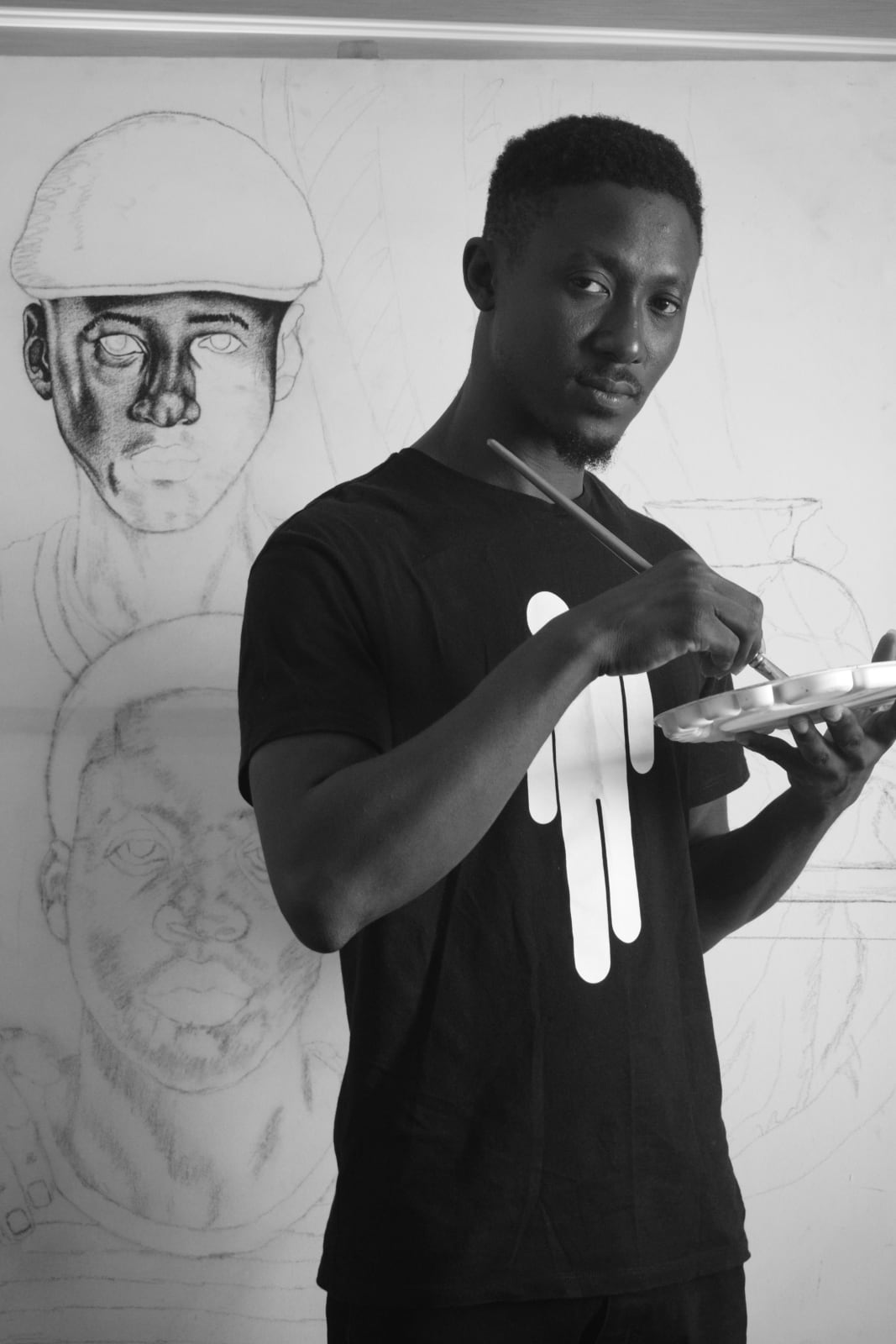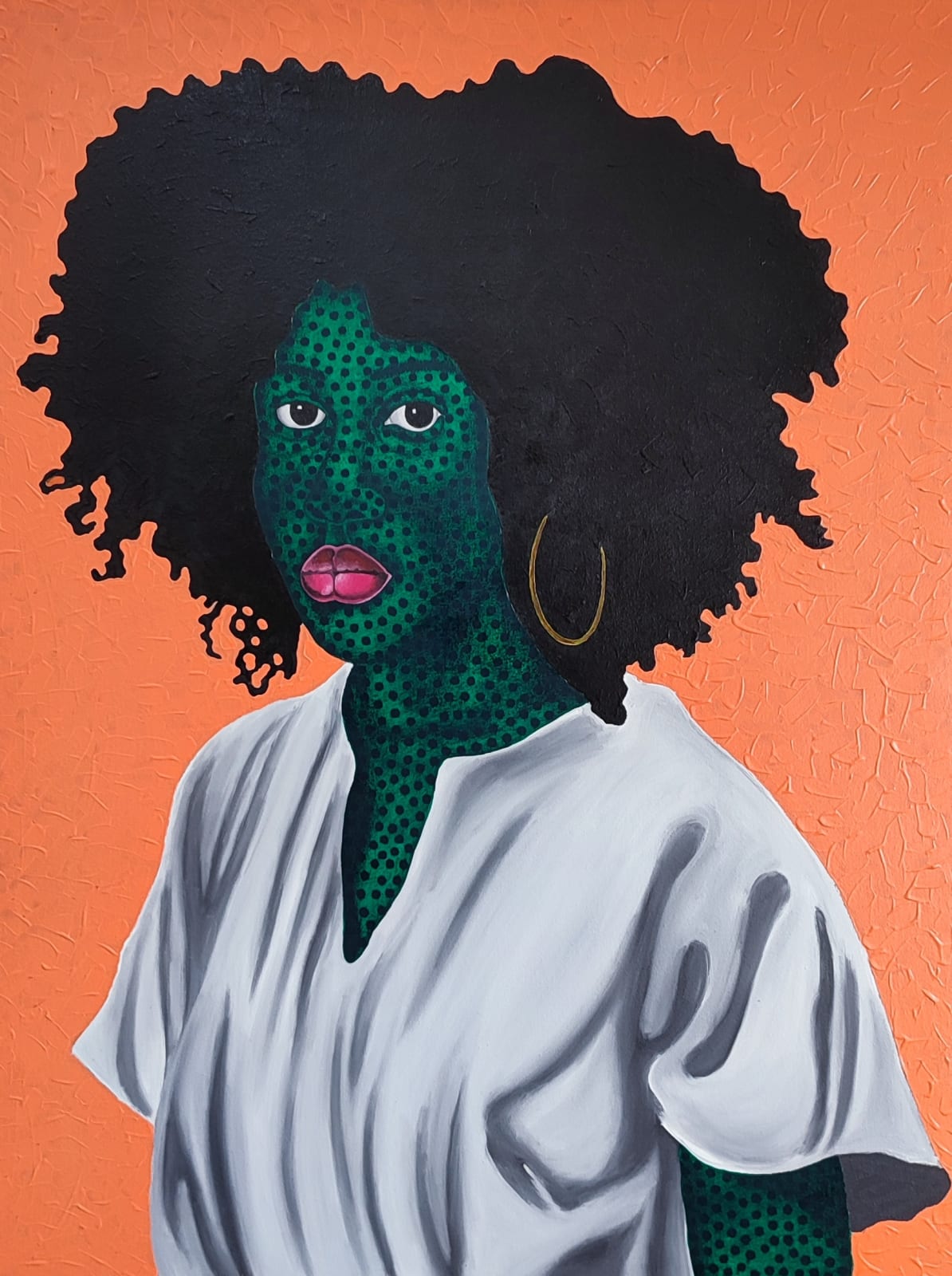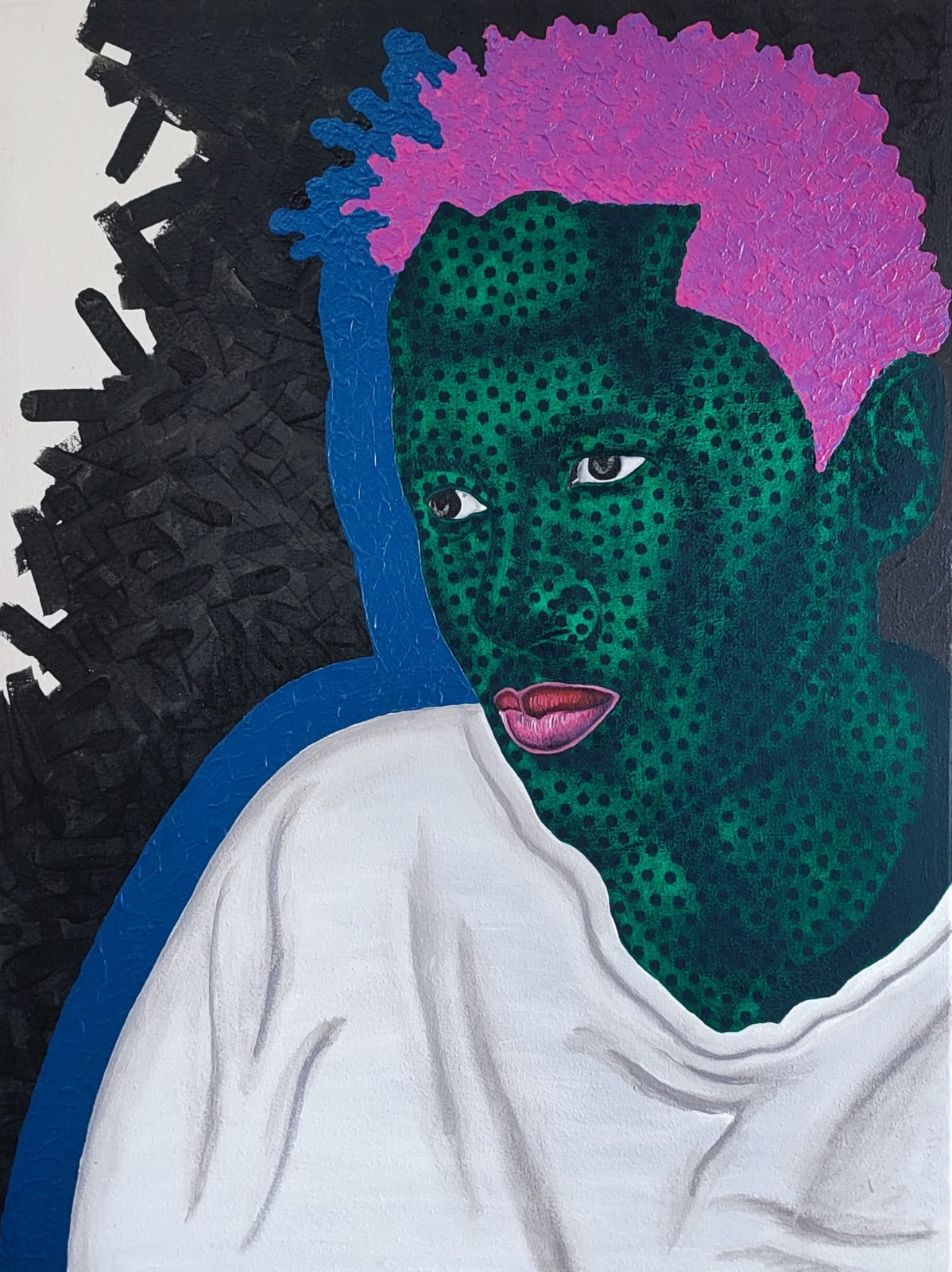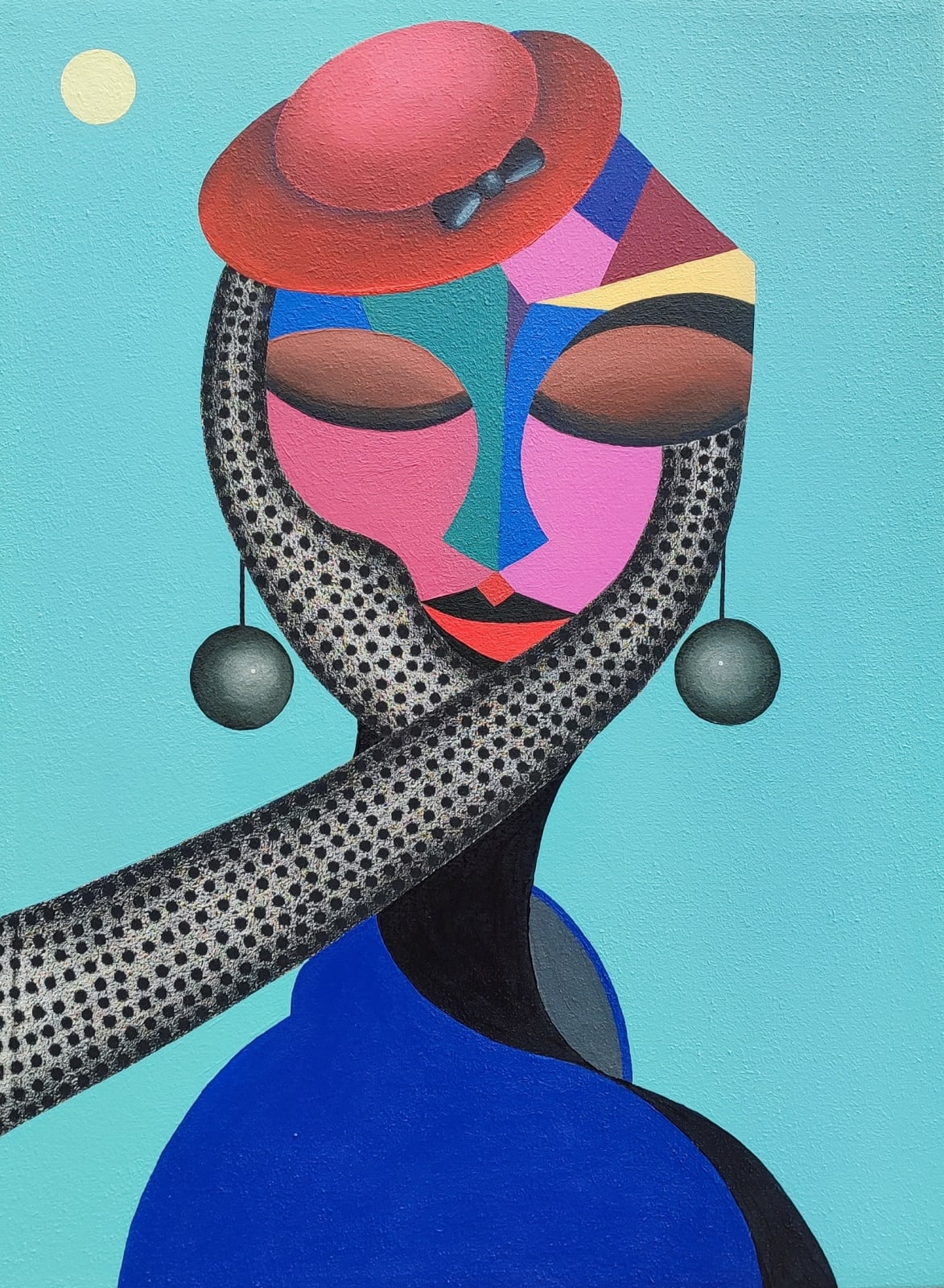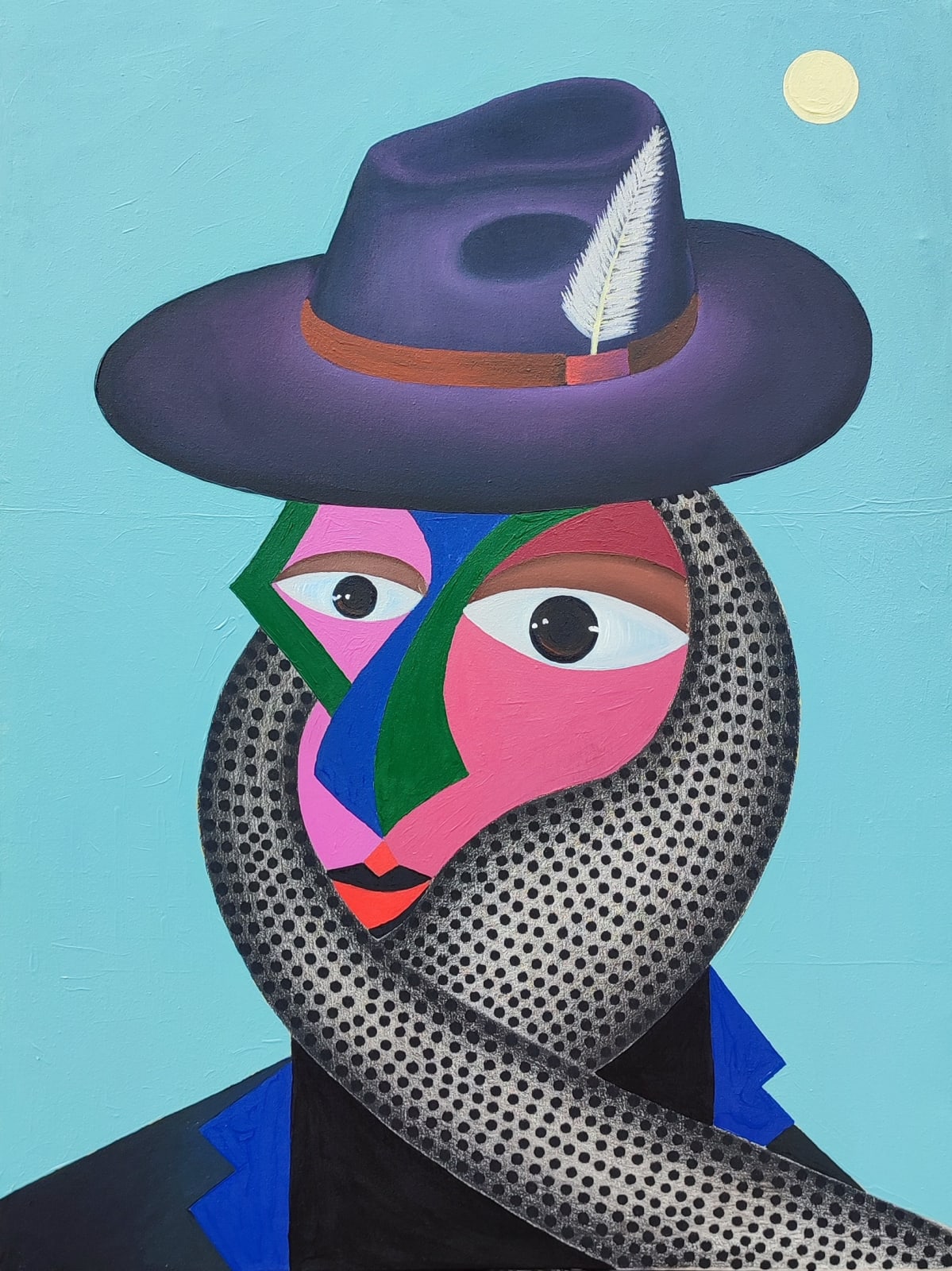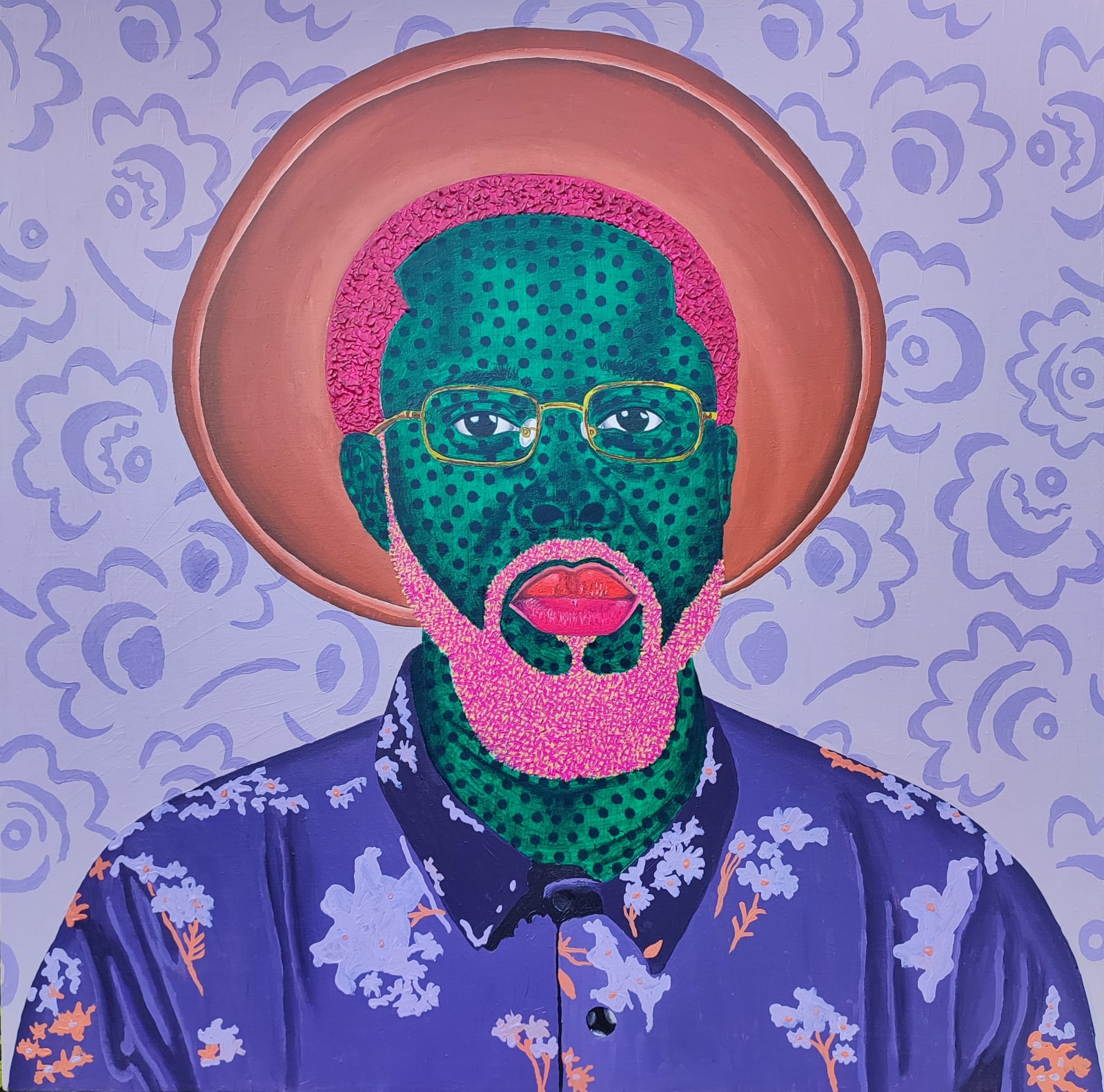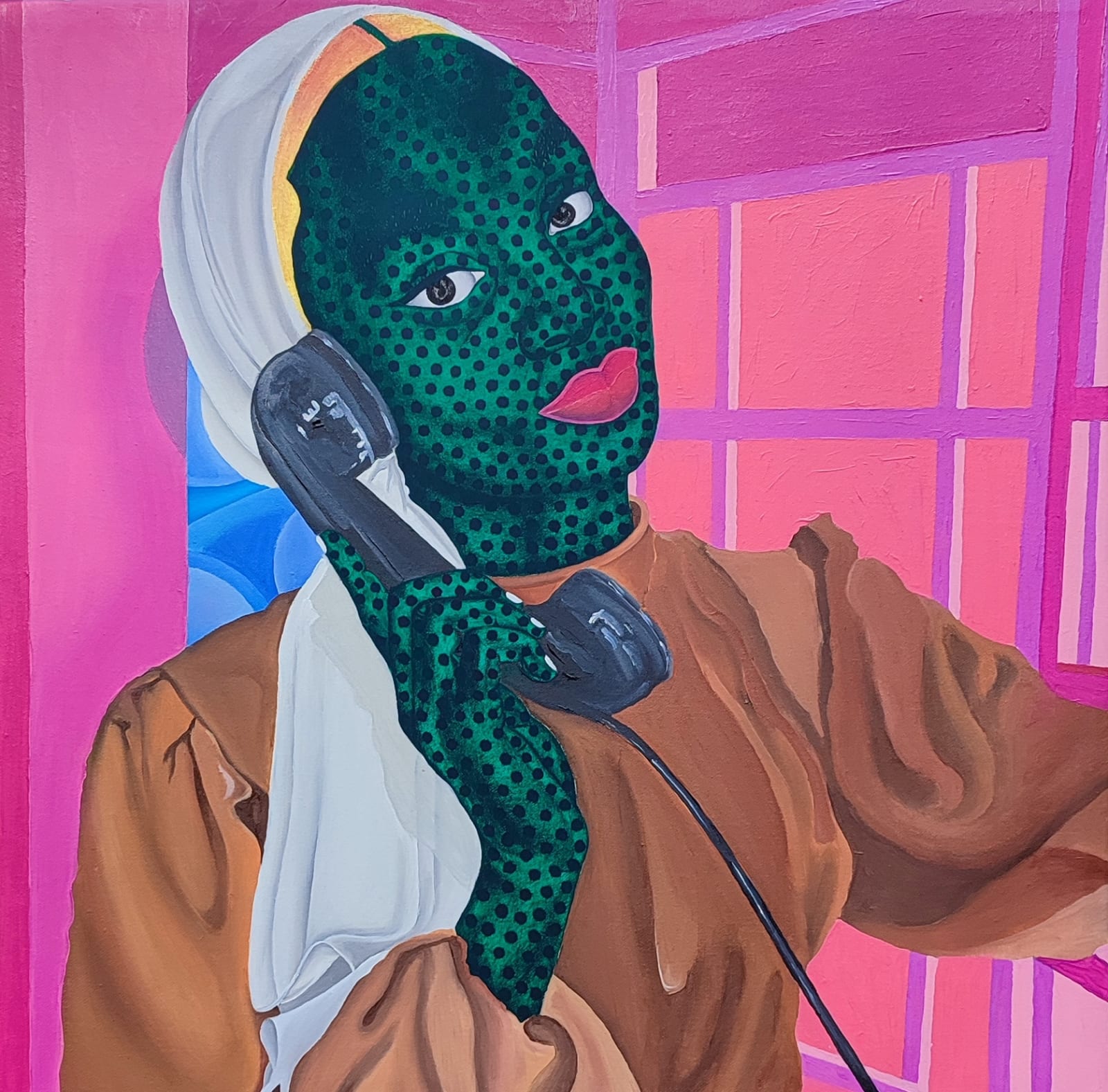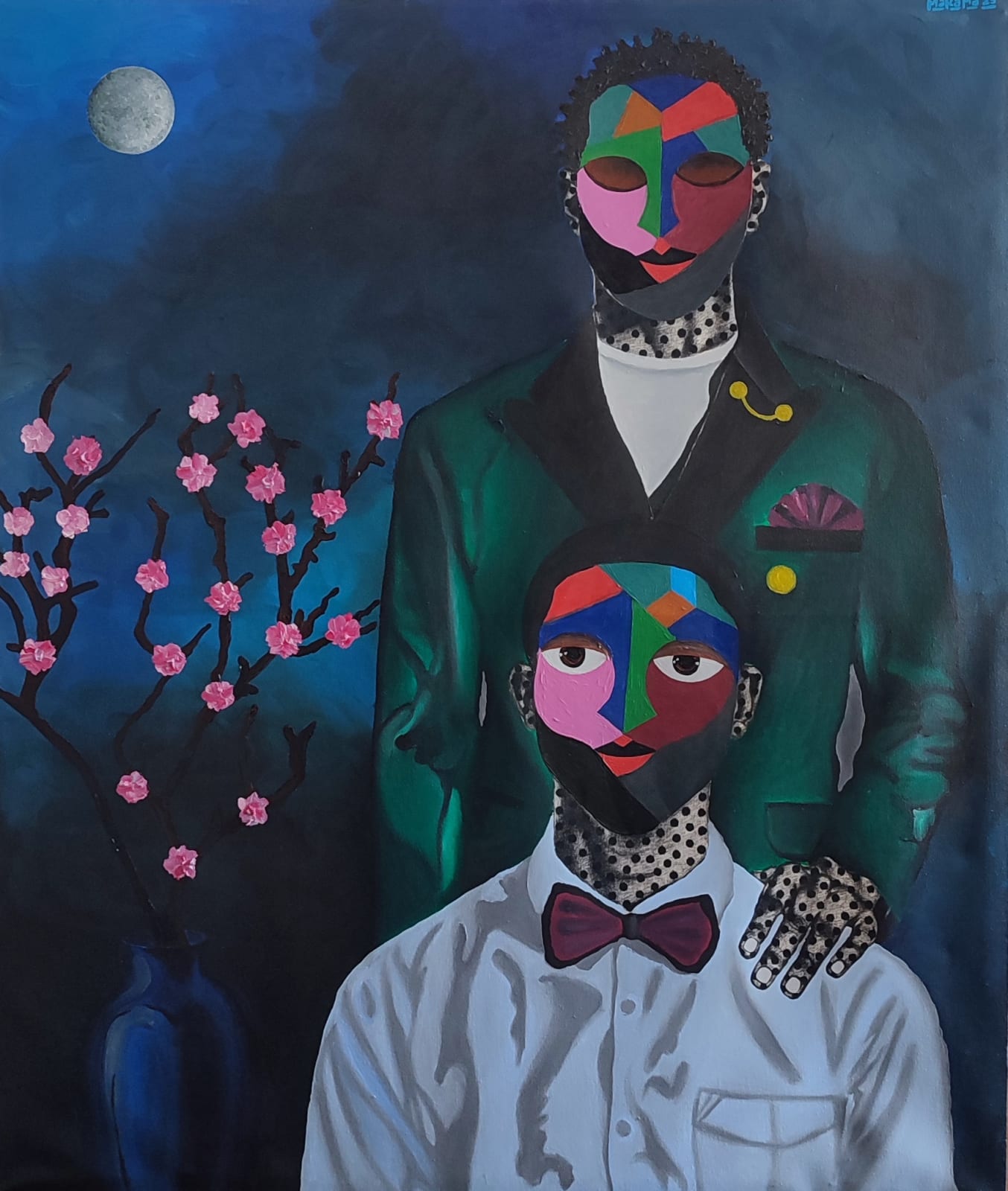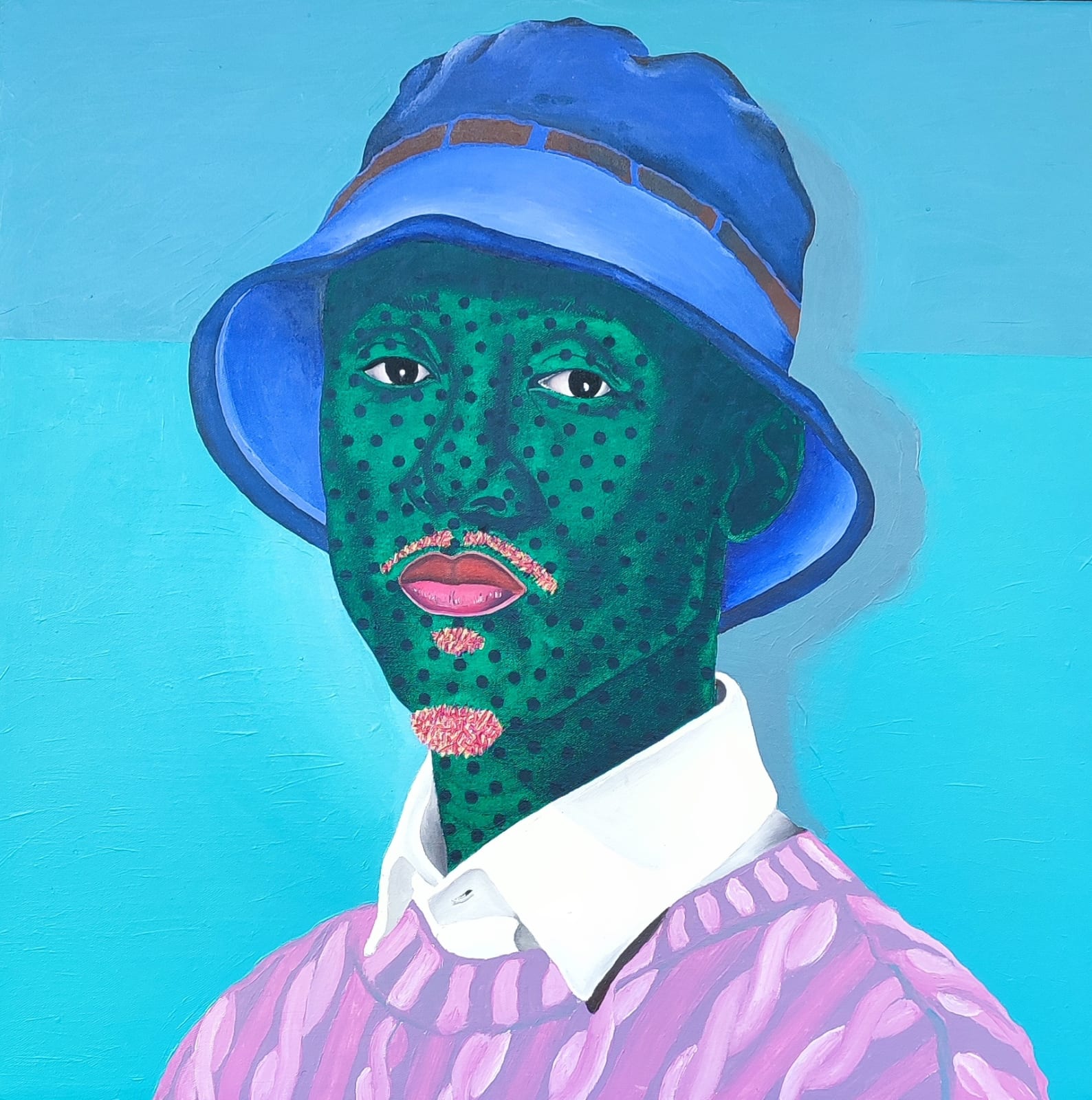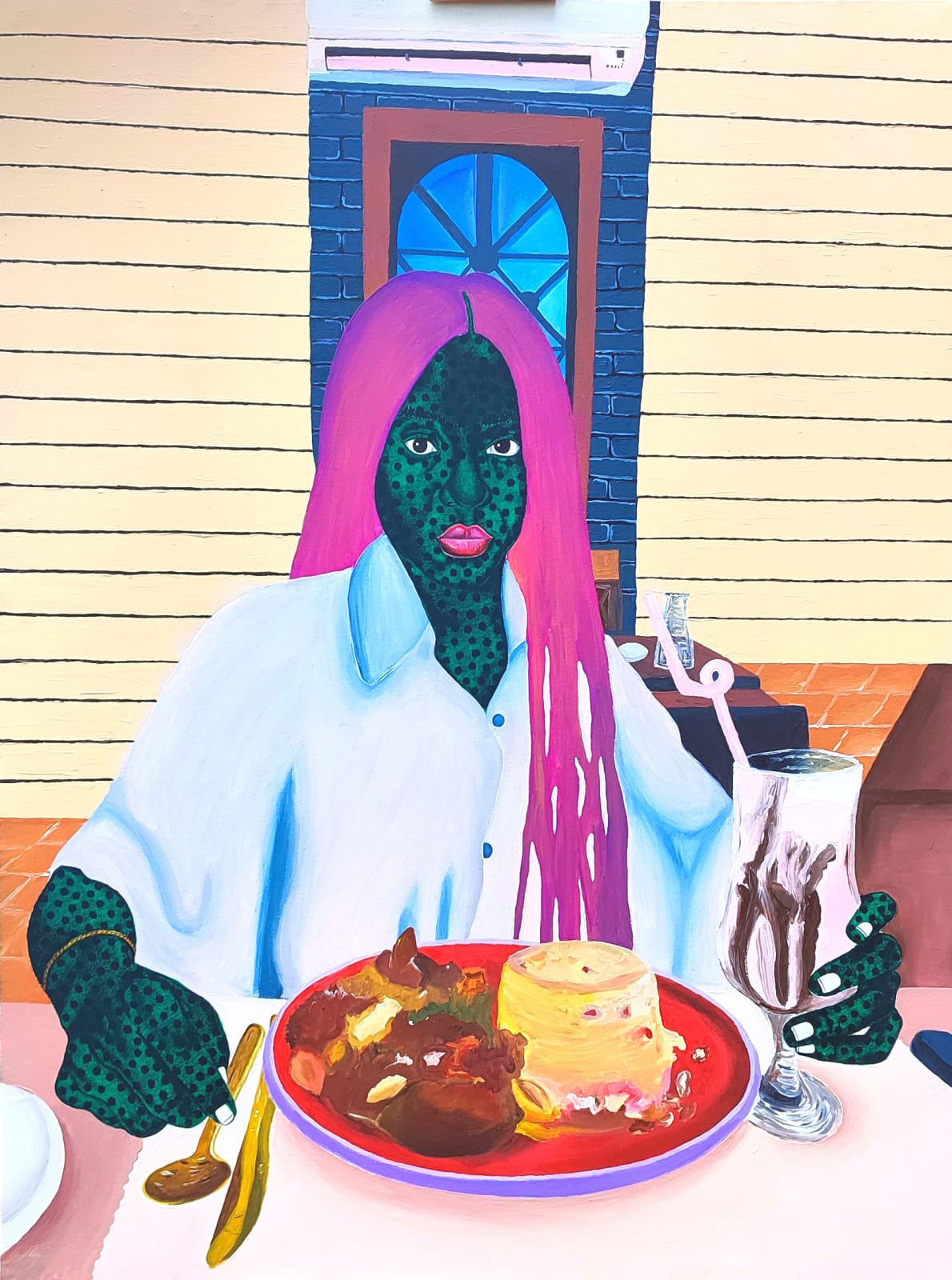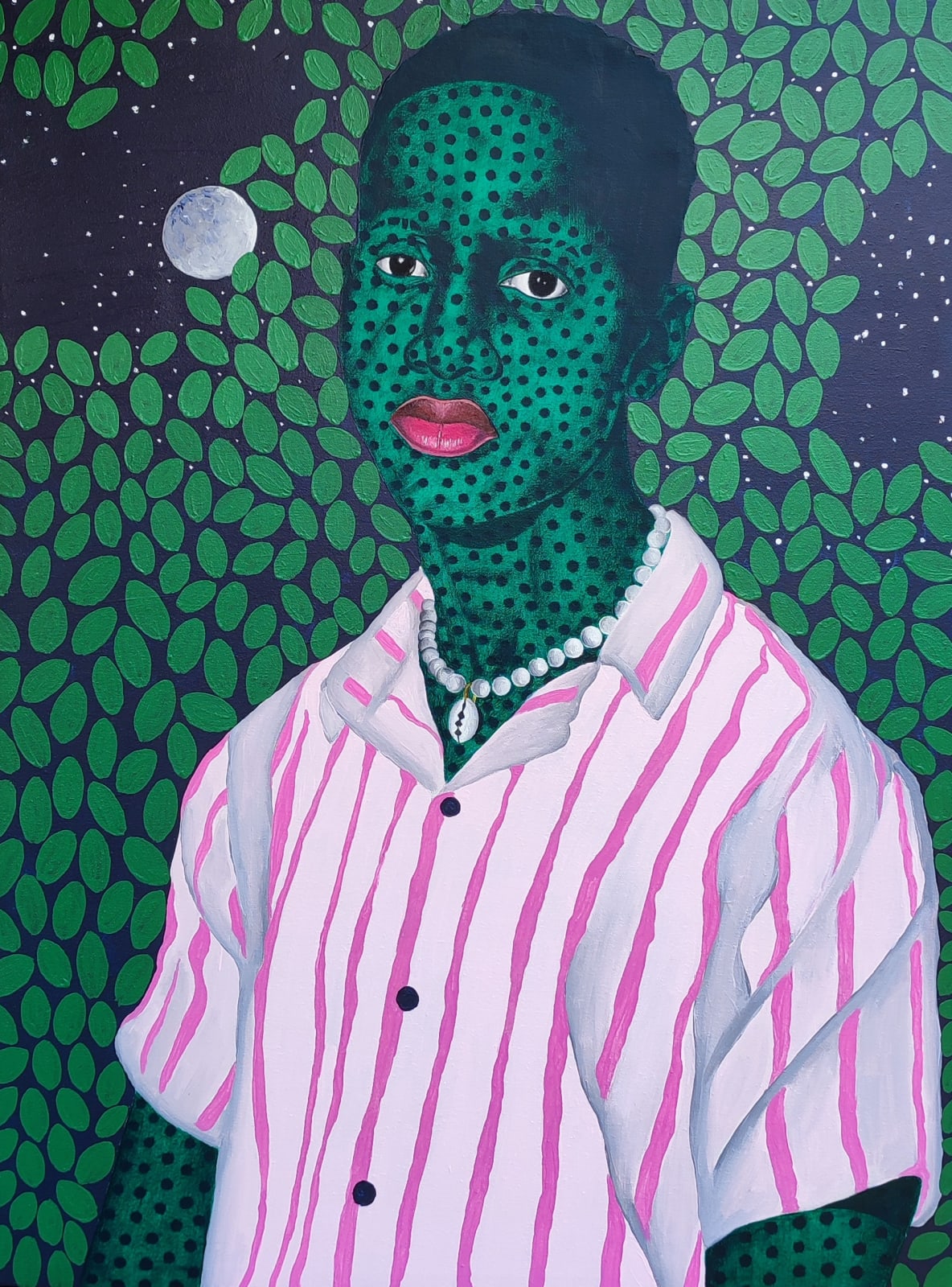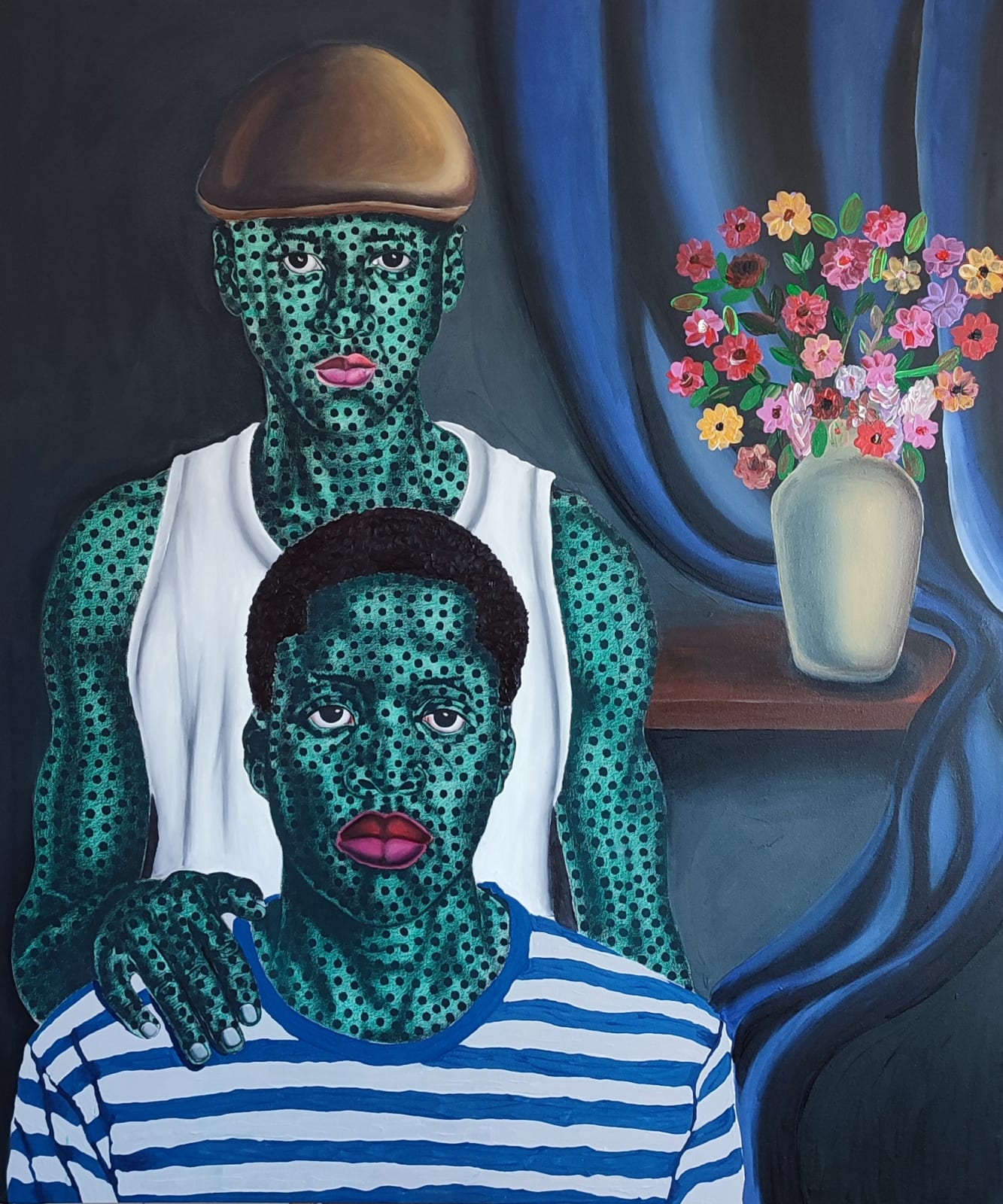Few decisions in life demand the kind of conviction required to abandon security in favor of the unknown. For Nigerian artist Makama John, stepping away from a stable job in hospitality was not just a career shift but an act of self-determination - an assertion of identity through creation. His work, deeply imbued with cultural symbolism and personal introspection, extends beyond aesthetics to interrogate themes of heritage, resilience, and the evolving narrative of African representation.
Known for his bold, unmistakable style, Makama’s work carries the confidence of someone who has long been immersed in the professional world of art. Creating from his home studio in Abuja, Nigeria, he brings his subjects to life with vivid green skin, playful polka dots, and striking features that exude both beauty and strength. Remarkably, despite only focusing on his craft for five years full-time, his artistry feels both mature and assured.
In an interview with Makama, he reflects on the pivotal moments that guided him toward a life in art, the personal and cultural influences that shape his striking visual language, and the advice he offers to those hoping to follow a similar path.
Studio Reflections with Makama
"I used to work a 9-5 job in the hospitality industry at Fraser Suites. It was an amazing job, but my life felt like it was moving in circles. It wasn’t an impulsive decision to leave but rather one fueled by a desire to break free from routine and embrace creative expression."
Self-taught and guided by instinct, Makama has been painting and drawing since childhood. But it wasn’t until 2019 that he made the life-defining decision to pursue art full-time. While balancing the demands of a traditional career, he felt a growing creative pull - an inner force that eventually became impossible to ignore.
Around the same time, he watched close friends like Barry Yusufu and Kalejaye Tosin ascend from local exhibitions to international recognition. Their success illuminated what was possible, and with their encouragement, mentorship, and hands-on support, Makama found the confidence to follow his own path. Today, his name is often mentioned alongside celebrated contemporary African artists such as Amoako Boafo, Annan Affotey, and Kehinde Wiley. And while deeply honored by the comparisons, Makama remains focused on carving out a distinct aesthetic that is entirely his own.
"Boafo’s textured portraits, Affotey’s mixed media techniques, Wiley’s mastery of pattern and symbolism - all of these influenced me, but my style emerged through experimentation, my personal experiences, and my cultural heritage. I found my voice by embracing these influences and staying true to my own vision."
A significant part of that vision is shaped by his childhood on his grandparents' farm. Growing up, surrounded by the cycles of growth, death, and renewal, he gained a deep understanding of the patience required to plant and nurture life, as well as the guidance nature offered in connecting the world around him. These formative experiences not only influenced the themes in his work but also shaped his distinctive use of color, particularly green.
"It represents growth, prosperity, and the rhythm of life. Just like in farming, everything happens in seasons - there’s a time to plant, a time to reap, a time to be born, and a time to leave this earth."
This connection to nature seamlessly integrates with the broader themes of unity and human connection that underpin his artistic philosophy. Central to his work is the recurring motif of black polka dots, a subtle yet powerful symbol that serve as a visual reminder of the interconnectedness of all people, reflecting the broader human journey that transcends cultural and geographical boundaries.
"There’s an evolutionary perspective that all human races stem from Africa, with the oldest remains discovered here. That means we’re all connected, no matter our background. The dots represent those ties - our shared history, our collective journey. There are also still many misconceptions about Africa, and as an artist, I feel a deep responsibility to portray my environment through an authentic lens."
Aiming to challenge stereotypes, amplify African voices, and foster global connection, Makama's work tells the stories of African people with honesty and depth - stories that he hopes will resonate across time and generations, on both personal and universal levels.
The alchemy of CREATION
Curious about his creative process, we wanted to step inside the mind of the artist. Does he approach each piece with careful intention, or do his most powerful works emerge from mistakes, creative blocks, or unexpected breakthroughs? Who inspires him? And who is on his dream list to collaborate with next?
"In one of my paintings, 'Men Don’t Cry, I Do', I accidentally spilled paint and the splash created something unexpected but beautiful. Instead of starting over, I embraced it and built the composition around that moment. What began as a mistake became the heart of the piece.
Same with 'The Cactus Story' - I got stuck while working on it, but one evening, I was praying in church when I had a vision that showed me exactly how to finish the painting. It was surreal, but so inspiring. Moments like that remind me that art isn’t just technical— it’s spiritual.”
Makama credits the great masters with teaching him to embrace imperfection, lean into spontaneity, and constantly push the boundaries of his creativity. No artist captures that ethos more, he says, than Pablo Picasso. “Picasso was fearless - constantly reinventing himself and challenging conventions. I’d love to see the world through his eyes, even if just for 24 hours.” Still, Makama isn’t one to linger in the past. Looking ahead, he’s eager to keep evolving and expanding his artistic range. At the top of his dream collaboration list? Fellow Nigerian artist Wilson Imini. “He paints in red, I paint in green. Imagine the contrast, the energy— we’d create something powerful.” (We couldn’t agree more!!)
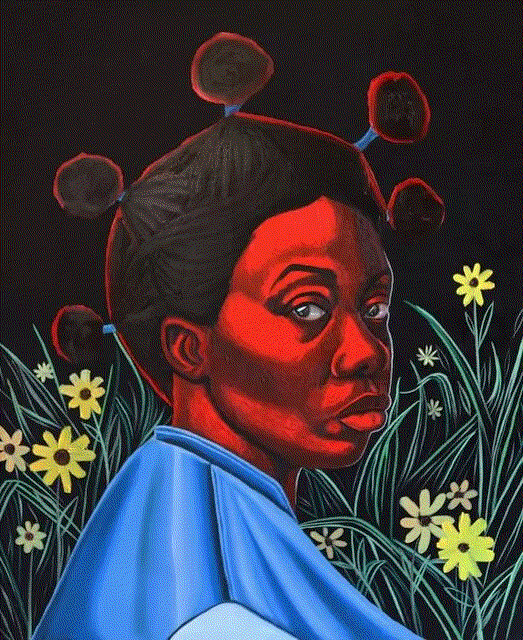
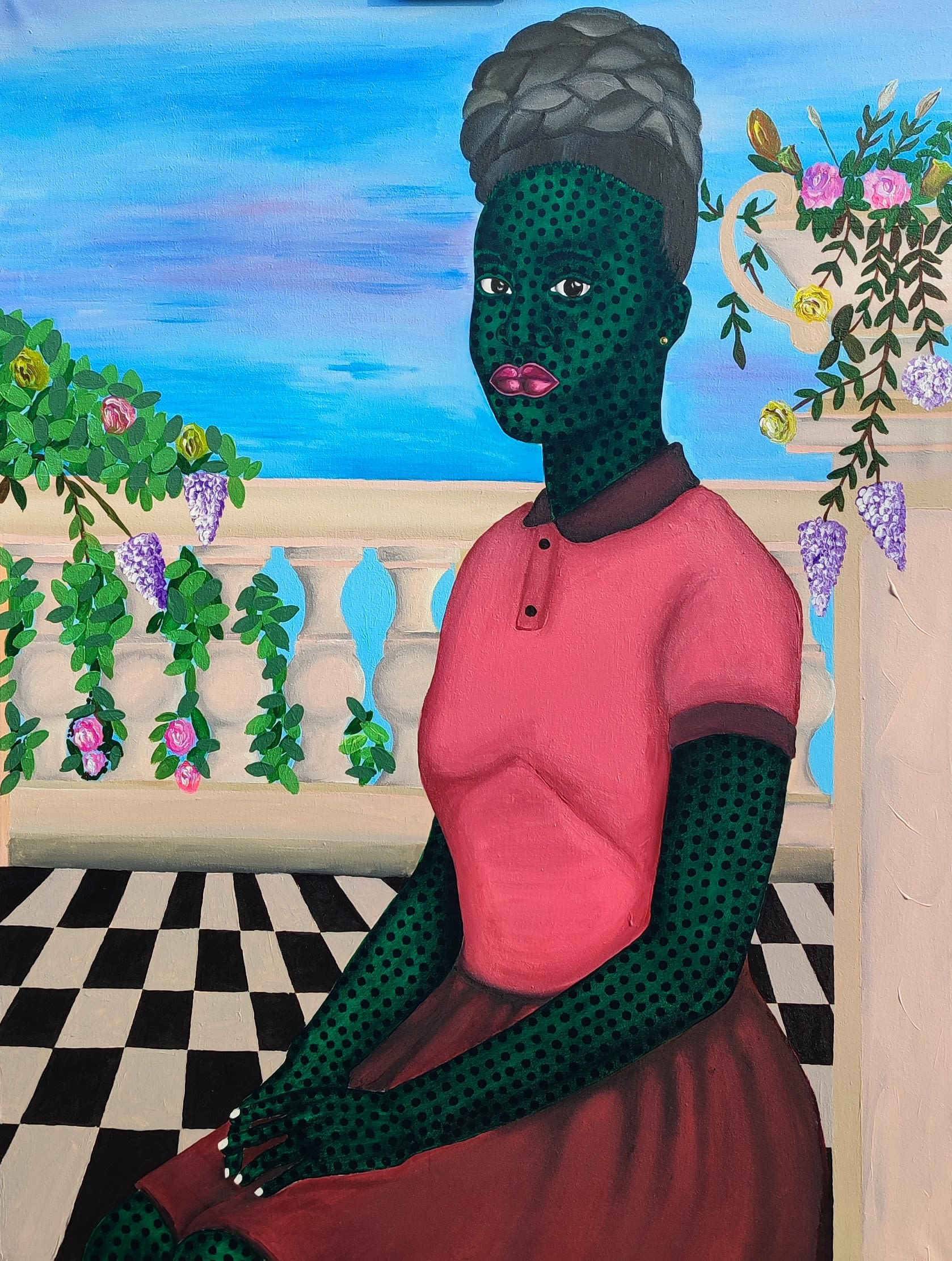
(Left: Wilson Imini Right: Makama John)
Before we wrapped our conversation, Makama generously shared a few words of advice for fellow artists working to push the boundaries of their practice, and get noticed while doing it. “It takes time for people to accept new approaches. Cameras rarely capture the true essence of a painting, so getting into exhibitions and residencies can be tough at first. But with perseverance, research, and the guidance of mentors, it’s possible to find your way - Be patient. Study those who came before you. Use the internet to your advantage. The roadmaps are out there - you just have to be willing to follow them.”
